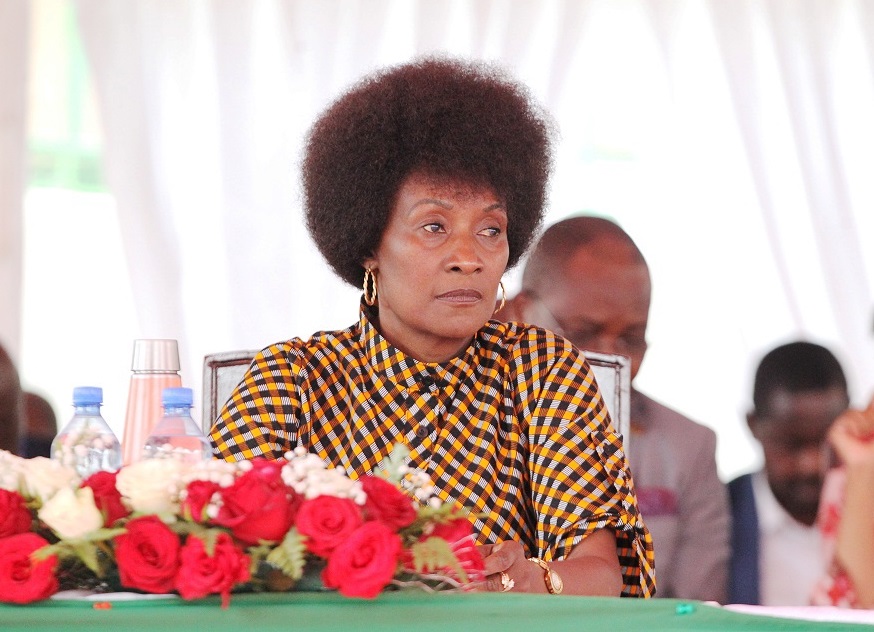Pay disparity among teachers and stagnation in the same grade has depressed senior tutors making them subordinate to their juniors, which has grossly frustrated the education professional spirit.
The petition against Teachers Service Commission disparity that would subsequently push for a salary review by Hon. Charles Nguna is “God sent”.
Concisely, most legislators, former teachers, have been suffering in silence since most teachers are qualified but working without zeal.
Teachers have thanked President William Ruto for clipping Teachers Service Commission’s powers which they blame for what is bedeviling them.
Focus is on the teachers who are lowly placed to address the huge disparity between the lowest and highest paid which stands at over one hundred thousand.
In the past, there was the dreadful job group ‘L’ where advancing to job group’ M’ was a nightmare even after attaining the requisite qualifications and experience, teachers would remain buried here for even 20 years.
It gradually changed its name to job group C3 however, the lucky ones escaped to become D1 teachers but those who were unlucky are either still in C3, C4 or C5.
The Teachers service commission here created two successive job groups to deter members of job group’ L’ from advancing to D1, These were C4 and C5.
The C4 grade now comprises of Senior Master IV, special needs teacher in primary and secondary, and Deputy Head Teacher II.
Teachers believe these other grades were created with an ill motive as it locked out and demotivated many experienced teachers.
The restructured pay points are as follows
J to C1
K to C2
L to C3
M to C4
N to C5
P to D1
Q to D2
R to D3
Status of teachers
B5 (T-scale5)-Primary educator 11
C1 (T scale 5)-Primary teacher 1, Secondary teacher II and lecturer III,
Grade C2(T scale 7) Secondary educator II, senior educator II, Lecturer II, Special Needs for primary schools)
Grade C3 (T-Scale 8) Secondary educator I, special needs education teacher II (For primary schools) Lecturer I, senior teacher I, special needs education educator II for secondary schools)
Grade C4(T-Scale-9) Senior Master IV, special needs education, senior teacher for primary school, senior lecturer IV Deputy Head Educator II and special needs educator (For secondary school)
Grade C5 (T-Scale 10) Senior Master III, Deputy Principal IV, senior Lecture III, Deputy Headteacher, Head Educator and Curriculum support Officer II.
Grade D1 (T-Scale-11) Deputy Principal III, Senior Master II, Senior Lecturer II, curriculum support officer I and senior head educator
Grade D2 (T-scale12) Senior Master and Deputy Principal II)
Grade D3 (T-Scale-13) Deputy Principal I and Principals.
Grade D4 (T-Scale-14) Senior Principals
GradeD5 (T-Scale-15) Chief Principals
The elongated scales were notably realized in three job groups namely, 9, 12 and13
It was a wonder to realize that primary school senior head teachers’ ceiling was capped at DI and not otherwise and why they couldn’t be allowed to advance to D2, D3 and D4.
This basically meant that regardless of how hard they worked, they still stagnated in the same scale.
Even as the petition is heard, why can’t the Teachers Service Commission consider the duration of service (Experience) Vis-a-vis academic excellence and responsibility to promote deserving teachers adequately to higher levels?
It’s unfortunate to learn that, to climb up the ladder in Kenya, one has to be an administrator, this hampers excellence awards among the classroom teachers who are only rewarded at school but it doesn’t add any lasting monetary value to them, we even have some departmental administrators who have other Superior abilities to the ones the heads have.
According to the Salaries and Remuneration Commission led by Lyn Mengich, salaries will be adjusted between 7 to 10 % while house and commuter allowances will have a boost of an additional 5% for particular job groups over a period of two years.
Why should a teacher live in a makeshift structure because of a low grade?
Something else is the medical cover which requires a relook and also the burial expenses which are no more and have elicited a sense of betrayal and dissatisfaction among teachers.
These are projected salary brackets after implementation,
B5 -27,195 to 29,915
C1-33,994 to 37,393
C2-46,694-48,064
C3-53943-59,337
C4-65,385-71,924
C5-77,840-85,624
D1-93,408-102,749
D2-109,249-120,174
D3-125,573-138,130
D4-141,891-156,080
D5-157,656-173,422
Commuter and house allowances are calculated on the above figures.
Another bone of contention is the disparity between C5 and D1 following the 2017 CBA, these are one but the same people with similar qualifications but different grades, these inequalities cause demotivation among any workforce anywhere in the world.
In addition to that, teachers who were in C3 grade then, were greatly disadvantaged as their counterparts went to either D1 or C5.
Some have been in C3 for over 15 years and are completely demotivated.
National statistics say that more than 10,000 teachers resign annually because of burnout and demotivation.
It’s still unfortunate to note that 45% of teachers which is nearly half of the total teaching workforce are more than ready to quit the job because of unfavorable working conditions and frustrations from their immediate supervisors.
Out of 288,000 Kenyan teachers, 129,600 would wish to quit their job.
The pay disparity between the highest and the lowest paid teacher is over 130,000, thanks again to the government which is trying hard to narrow this gap.
Most teachers who have exited the profession have exceptionally excelled elsewhere with a handsome pay package and can’t be equated to those who feared to quit.
Most of them have shifted to Nursing and other different professions.
It’s true to note that well-trained professionals, proper remuneration, quality teaching tools, conducive learning environment, are necessary variables that must be embraced to enhance quality teaching.
In 2019, there was a mass exodus of teachers in the humanities, Kiswahili, physics and computer studies according to the then TSC chairperson Dr. Maria Nzomo, the trend which has continued hitherto owing to salary disparities.
Thanks to the Presidential Working Party on Education Reforms which is reaching out to the in-depth analysis of the issues bedeviling the teaching profession, it’s my hope that the same recommendations will be implemented.
At the moment, the most marketable subjects are Mathematics, physics, chemistry, Biology, Agriculture, computer studies, Geography, Business Studies and Home science.
These professionals have to be encouraged and motivated since there is still an exodus to greener pastures.
According to the world’s billionaire Bill Gates, school teachers will soon be replaced by Artificial Intelligence (AI).
These are robots which he says are far better equipped to teach learners than humans.
They are also called AI Cobots and would cost about 20 dollars per hour an equivalent of ksh.3000 per hour which interprets to around Ksh.900, 000 per month comfortable to pay about 45-B5 teachers per month who can attend to over 2000 learners as per Kenyan standards.
If the teaching profession has to make any significant stride, pay disparities, experience, and general working conditions have to be amicably addressed by the petition leveled towards the Teachers Service Commission.
By Hillary Khamati
Get more stories from our website: Education News
To write to us or offer feedback, you can reach us through: editor@educationnews.co.ke
You can also follow our social media pages on Twitter: Education News KE and Facebook: Education News Newspaper For timely updates.






